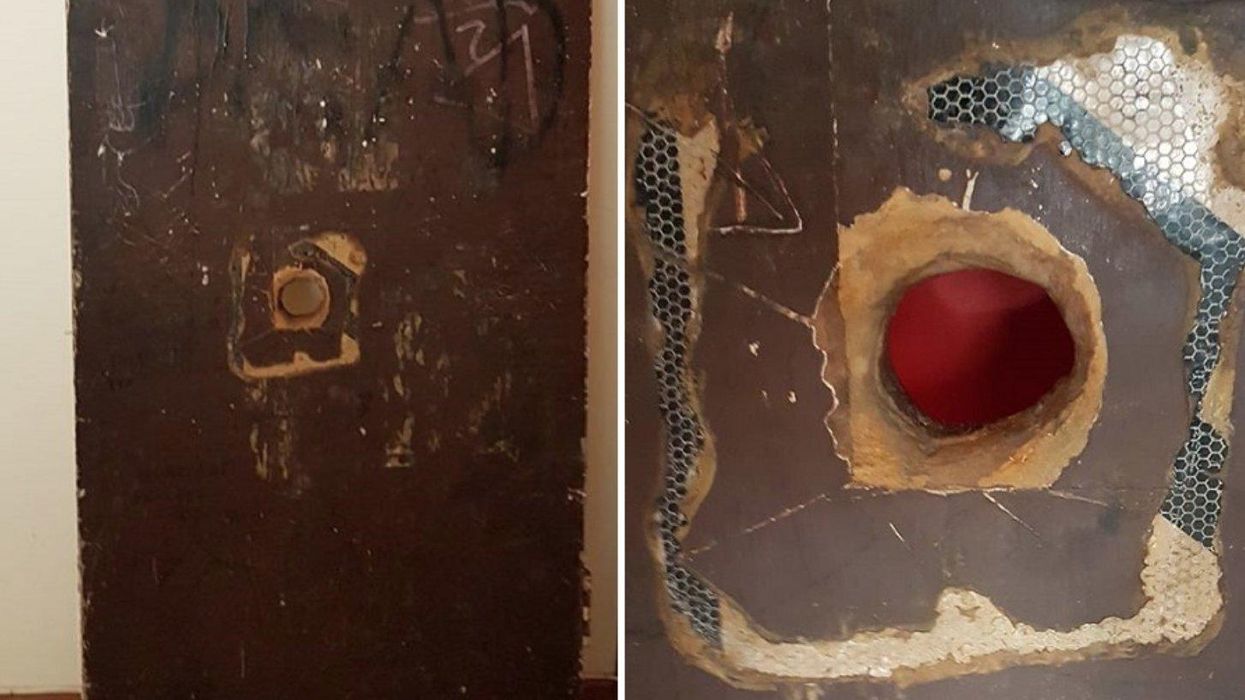Non-topics
There’s Now a Glory Hole on Display in a Major Museum

By continuing to use our site, you agree to our Privacy Policy and Terms of Use.

It’s been quite a week for holes. First Julia Roberts shamelessly flaunted how her holes are improving with age, and now a historic glory hole is causing controversy in the land from down unda.
The Western Australian Museum has recently acquired a large glory hole for diplay, and some critics are worried that the hole is distasteful and inappropriate.
The pleasure receptacle is a wooden toilet door with a circle cut through at waist-level. It’s from a train station in the south-east of Perth, from a time when homosexuality was illegal in Western Australia.
Neil Buckley, who’s a member of the activist group Sisters of Perpetual Indulgence, saved the door in 1997 before the entire toilet block was demolished.
“I am sure this exhibit will bring back a lot of fond memories for many of the men who used beat culture as a way to meet other gay men to form a friendship, partnerships and a quickie,” he told The Perth Voice.
“Beats [cruising areas] were an important part of gay social life and culture: they were a great place to meet, make friends and have a great anonymous sexual experience. Beat culture is not often talked about, but most of the gay community has done it at one time or another.”
The Sister concluded, “Sadly this culture has now disappeared with the installation of automated toilet cubes and gay pick up apps like Grindr [and] Scruff.”
We’ll have to agree to disagree on the last part, but Buckley’s argument is sound. The glory hole is undoubtedly a part of queer history. They weren’t solely used for a quick one-off, but are representative of a time when being openly gay was illegal, and this was one of the few ways gay/bi men could express their sexuality in public.
WA Museum chief executive Alex Coles agrees, noting that it’s necessary to document all aspects of queer culture.
“Clearly the LGBTQI community is a very important part of Perth’s society,” he told Perth Now. “We often talk about museums as safe places for unsafe ideas. Places you can explore topics that are maybe controversial, sometimes contentious, sometimes even confrontational, but the kind of places they can be explored in a responsible and measured way and hopefully without rancour.”
Some critics have called the hole “tacky” (and they hate it).
Shadow Culture and the Arts Minister Tony Krsticevic said, “While it is appropriate for the WA Museum to chronicle the rich and proud LGBTI community as a significant element in the state’s history, such an object is too tacky for display at what will be such a great new venue.”
In the end, the artifact will remain in the 120-year-old museum’s permanent collection, and it’s up to the art curators to decide if and how they’ll display the piece.
“It would depend on how it is presented, I would like to think we would always be sensitive,” Coles said. “We are representing diverse views of many people and diverse views of people who may be offended … and we take that into account as well.”
In my humble opinion, the only real issue with displaying the glory hole in a history museum is the the implication that glory holes are a thing of the past. That, my cruisy friends, is far from the truth.